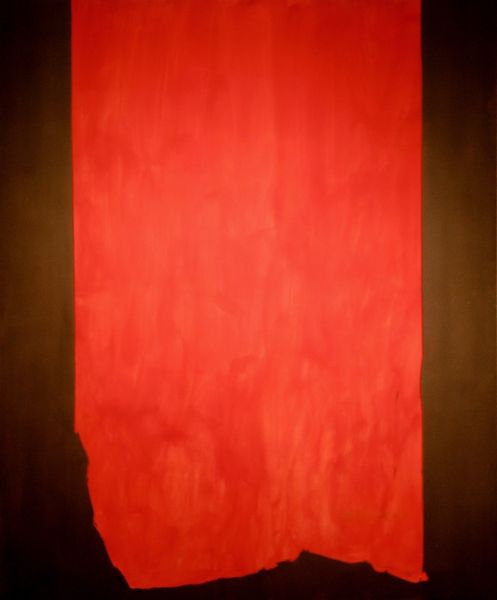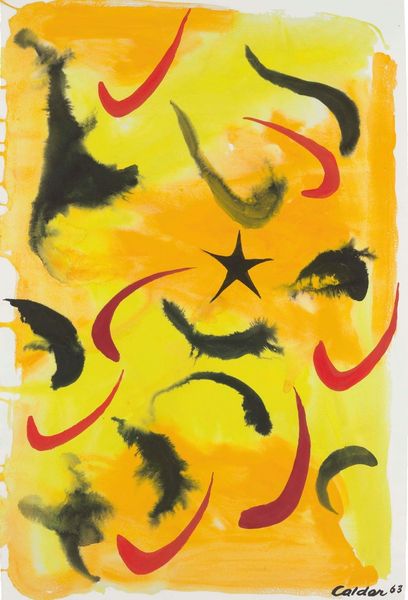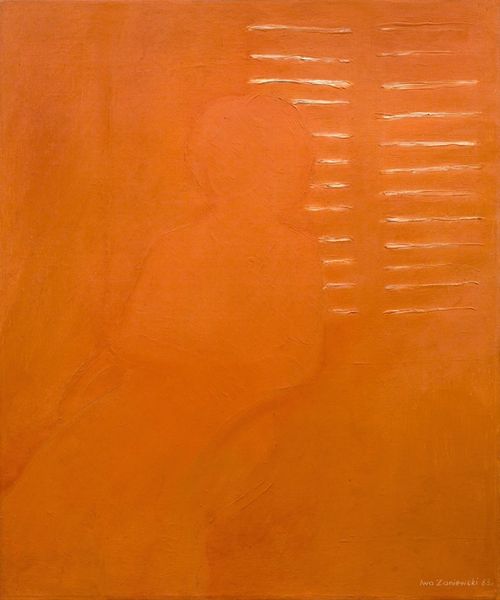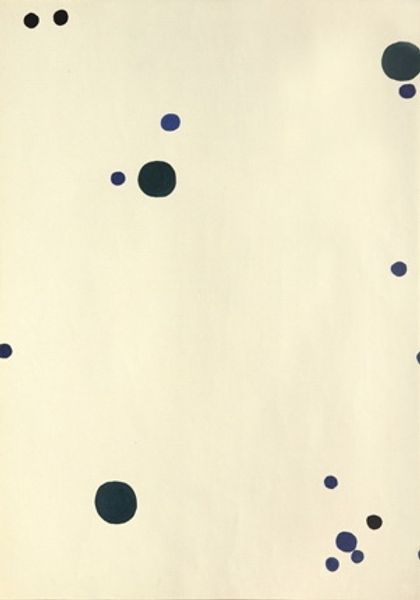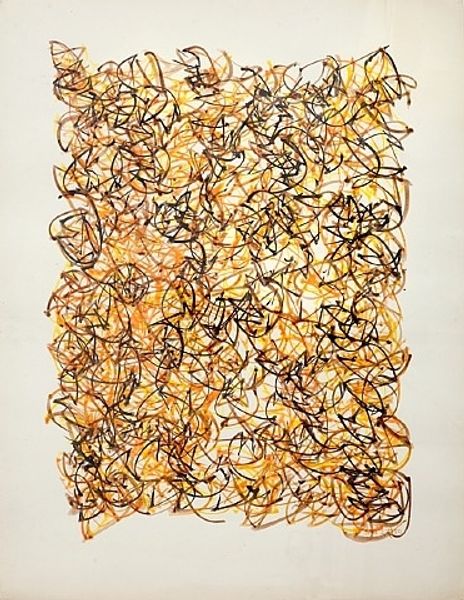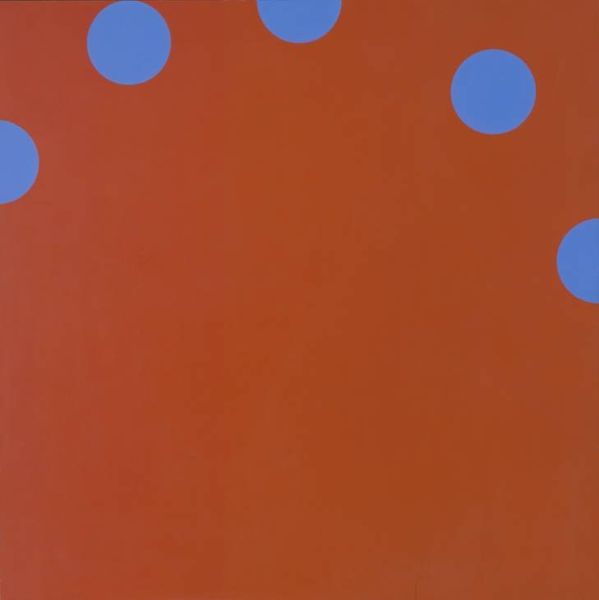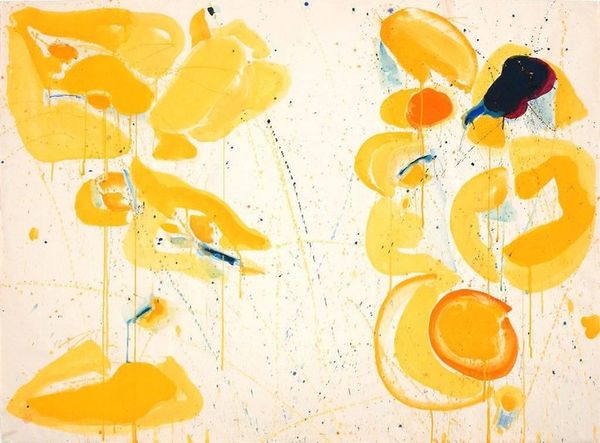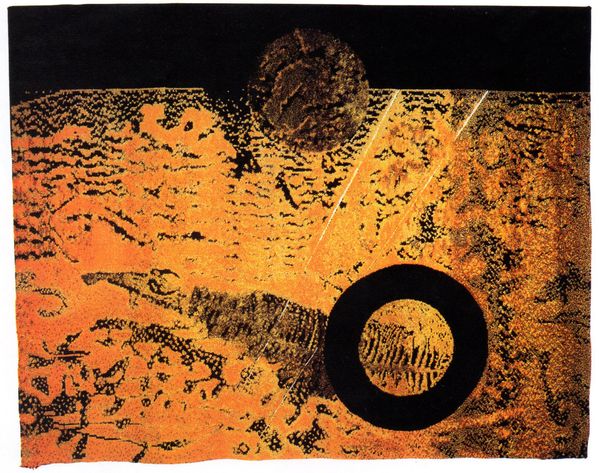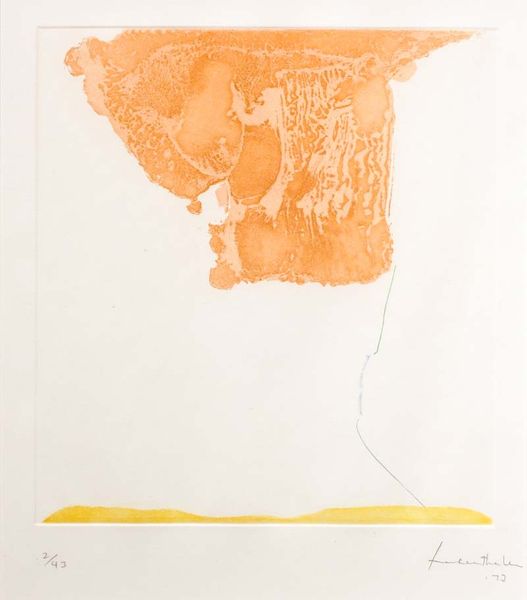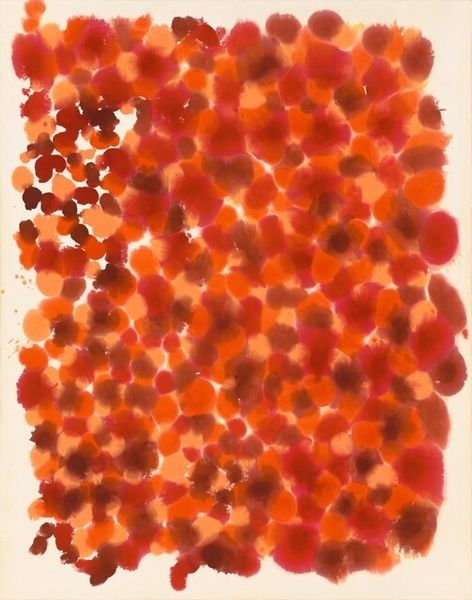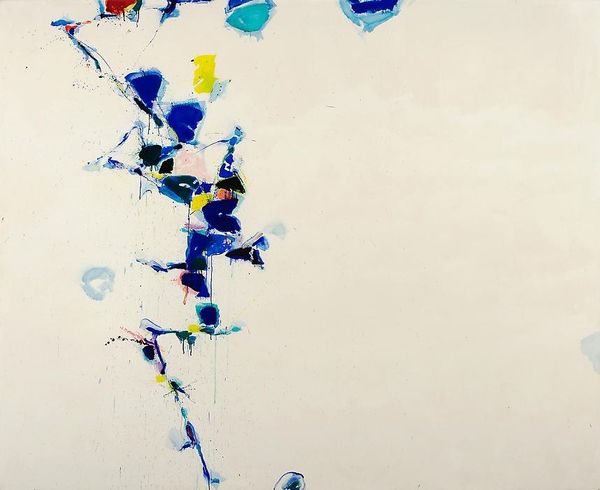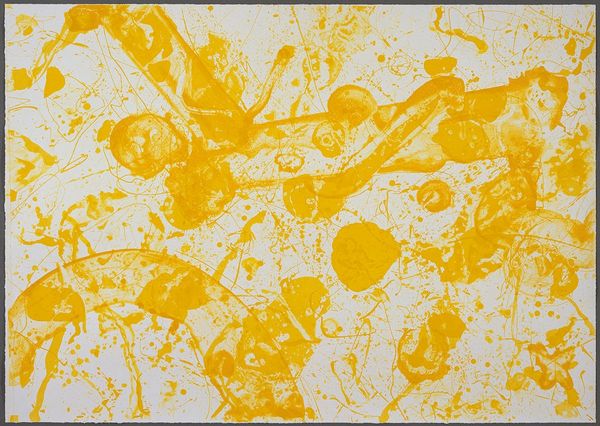
Copyright: Funasaka Yoshisuke,Fair Use
Curator: This is an untitled acrylic work by Funasaka Yoshisuke, created in 1974. Editor: My first thought is the color, this strong, warm, slightly unsettling yellow-orange. It feels…retro, maybe. And there's this almost oppressive weight to the surface punctuated by small dark marks that disturb what would otherwise be perfect. Curator: The circles ghosting behind the main color create depth, like a fading memory or a palimpsest. These recurring geometric patterns resonate across different eras of abstraction, recalling a kind of Platonic ideal. But the random black marks pull you back into an organic world. Do they represent disruption or entropy, the natural breaking down of perfection? Editor: That entropy speaks to the societal tensions bubbling beneath the surface during the mid-70s. You've got post-war disillusionment meeting feminist critiques of geometric abstraction’s male-dominated canon. Did Funasaka intend those spots to symbolize imperfections, vulnerabilities that challenge the utopian aspirations inherent in hard-edge abstraction? Or is that just me projecting? Curator: I'd say it is both/and; the conscious intention may be irrelevant. Visual symbols accumulate cultural weight over time. Think about dots—they can be individual, almost invisible, or combine to create forms. In some belief systems, a single dot signifies the origin, the singularity before all things, which links to this period's fascination with quantum physics and minimalist philosophies. Editor: I see what you’re saying, there’s something about this piece that also feels connected to feminist art from the period. Despite its appearance it stands in contrast to overtly radical expressions, could this represent a subtle form of defiance, utilizing accepted modes but embedding resistance in the imperfections, in the organic seeping into the geometric? Curator: Perhaps. It makes me wonder what visual vocabulary future generations will read into Funasaka’s creation, these markings could stand for any future point of societal or personal turmoil. It's a mirror reflecting ever changing collective experiences. Editor: And maybe that’s where its power resides. By refusing to settle into a singular narrative, it becomes a site for continuous re-evaluation. Curator: Indeed. It remains powerfully and ambiguously open.
Comments
No comments
Be the first to comment and join the conversation on the ultimate creative platform.
